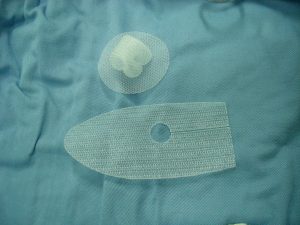
Generally, a court must have proper jurisdiction over a case or controversy before that case may be heard in a given county or state. Proper jurisdiction requires that a court have both personal and subject matter jurisdiction over a case or controversy. As to personal jurisdiction, courts have recognized two categories: general and specific. Proper general jurisdiction depends on the nature of the party to the suit and that party’s geographic location, as general jurisdiction over an individual rests only in a defendant’s domiciled state or county, and general jurisdiction over a corporation rests in a place “in which the corporation is fairly regarded as home.” Conversely, specific jurisdiction requires the suit to “arise out of or relate to the defendant’s contacts with the forum.” The primary concern of an appellate court in assessing a grant of jurisdiction over a nonresident defendant is the burden on the defendant and the accompanying Due Process Clause concerns where a defendant is forced to submit to the “coercive power of a State that may have little legitimate interest in the claims in question.”
This case, which arose from allegations that Plavix had damaged the plaintiffs’ health, was heard by the California Court of Appeals where the Court found that California courts lacked general jurisdiction, but had specific jurisdiction over the claims brought by the nonresident plaintiffs. The California Supreme Court affirmed the Court of Appeals’ ruling based on a “sliding scale approach” to specific jurisdiction. The California Supreme Court’s “sliding scale approach” conclusion was based on Bristol Myers Squibb’s “wide ranging contacts” with the State because the nonresident’s claims were similar enough with California resident’s claims and because Bristol Myers was engaged in other activities in the State. However, the U.S. Supreme Court rejected California’s “sliding scale approach” as it was unable to square the “loose and spurious form of general jurisdiction” with the U.S. Supreme Court’s existing precedents.
On June 19, 2017, Justice Alito, with whom seven other justices joined, delivered the opinion of the Court, requiring a narrow interpretation of specific jurisdiction. According to the holding in Bristol-Myers Squibb Co. v. Superior Court of California, Et al., specific jurisdiction requires the existence of an “affiliation between the forum and the underlying controversy, principally, an activity or an occurrence that takes place in the forum state.” So, when no connection exists, specific jurisdiction is lacking regardless of the extent of a defendant’s activities within the State unconnected to the nonresident plaintiffs. The holding further asserted that the mere fact that other plaintiffs were prescribed Plavix in California was insufficient to assert specific jurisdiction over the nonresidents’ claims. Moreover, even the fact that Bristol Myers conducted research in California unrelated to Plavix was insufficient to support a grant of specific jurisdiction. Thus, a grant of specific jurisdiction must rest on a connection between the forum and the specific claim at issue. Attenuated links or connections, without more, are insufficient to satisfy the jurisdictional requirements.

 Atlanta Personal Injury Lawyer Blog
Atlanta Personal Injury Lawyer Blog










